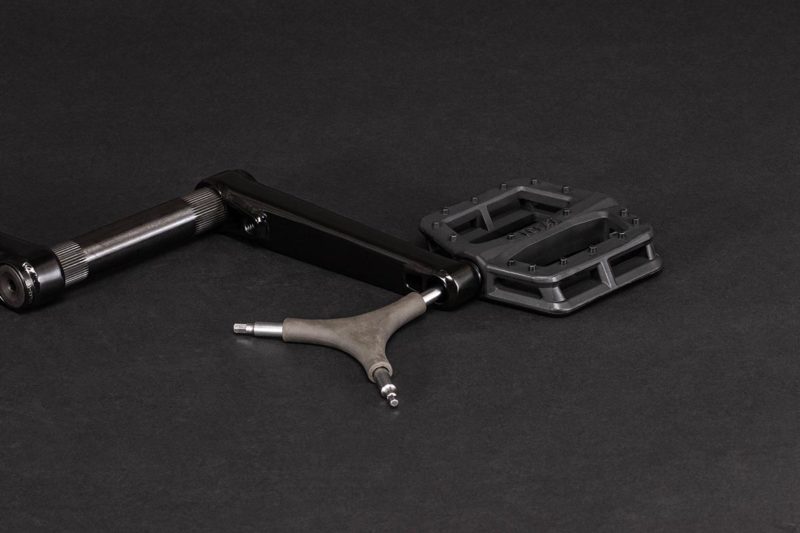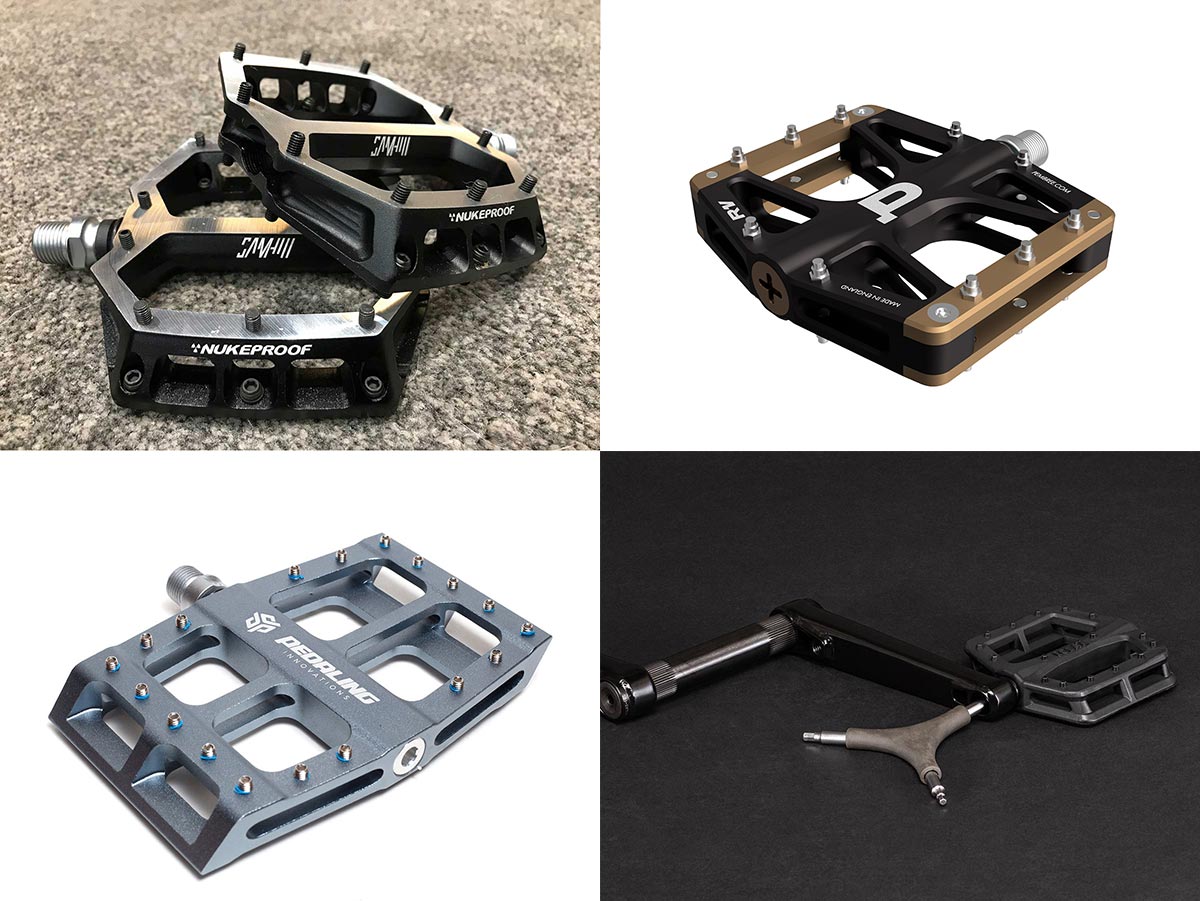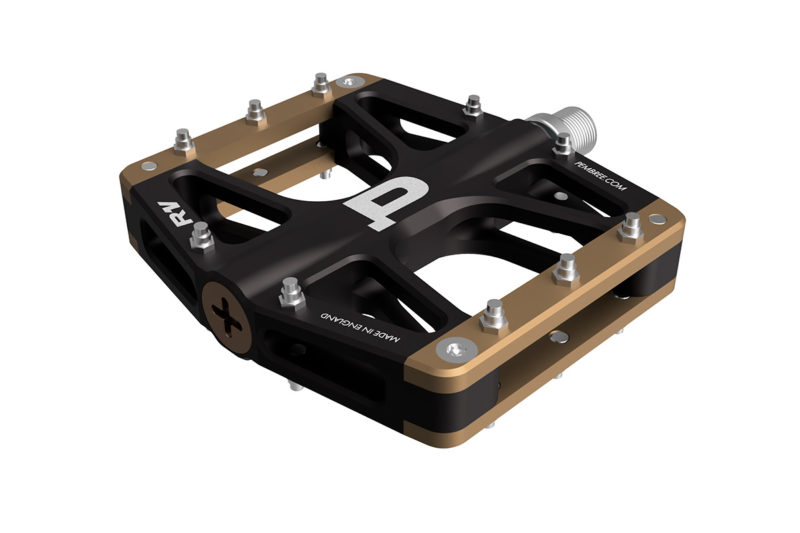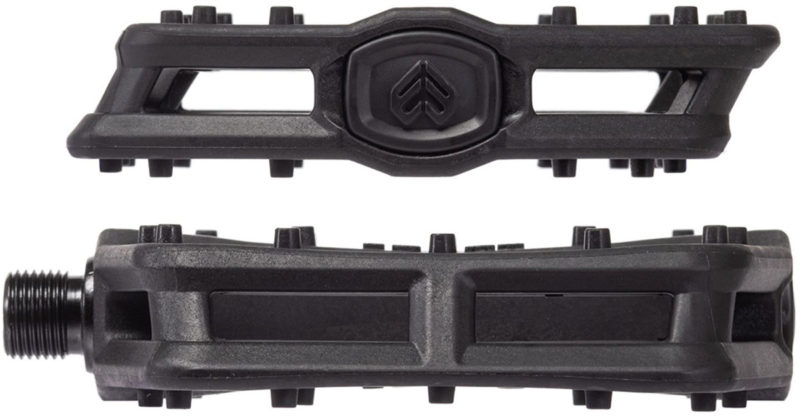Though most of the top enduro and downhill athletes opt for clipless pedals over flats, the fastest man in the World, Sam Hill, still rides on flat pedals. Here, we take a look at his Signature pedal from Nukeproof, and two lesser-known flats that have recently popped up. One of those is Pedaling Innovations’ Catalyst and Catalyst EVO pedals, boldly claiming to be the best flat pedals… period.
Pedaling Innovations Catalyst One & Catalyst EVO
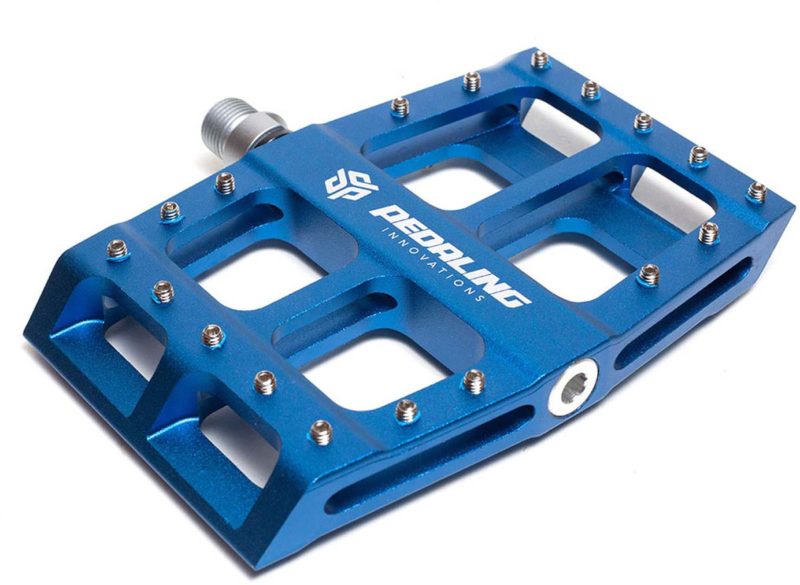
James Wilson, an MTB Strength Coach, is the founder of Pedaling Innovations, and author of “The Flat Pedal Revolution Manifesto“. This guy is well and truly in Sam’s camp when it comes to Flats versus Clipless pedals; a true believer that Flat Pedals are superior.
The first thing you’ll notice about these pedals is that they are super long; five inches long (128mm), in fact. But, they are actually no wider than standard flat pedal platforms, at 95mm. Why so long? Well, James claims that the Catalyst pedal is the “World’s first mid-foot optimized pedal”.
The design is based on scientific data and movement principles and “is guaranteed to give you the power of clipless pedals, the fun and safety of flats, and comfort that no other pedal can provide”. Bold claims! So, why is the Catalyst pedal optimized for the mid-foot?
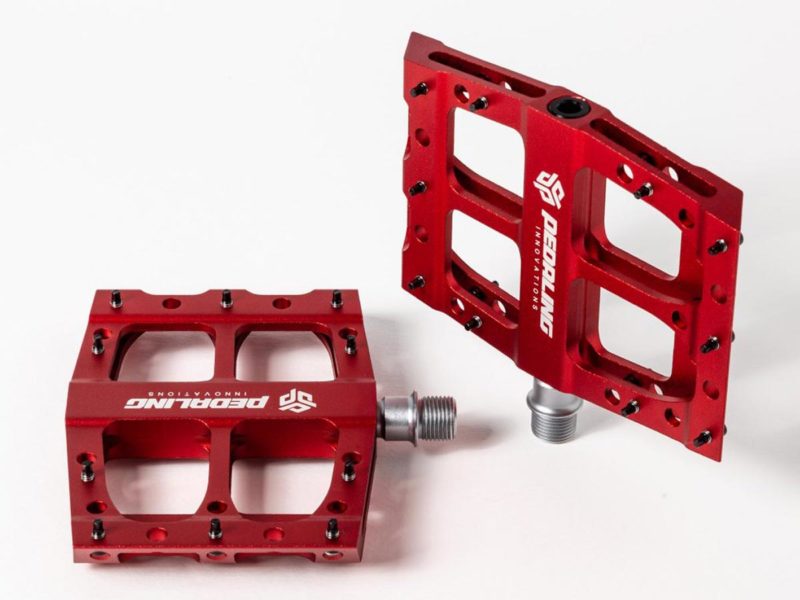
James’ design is partly based on some research published in the Journal of Biomechanics in 2007 that showed that there is no difference in power output between pedaling using the ball of the foot and pedaling using the mid-foot.
They also found that driving force through the ball of the foot placed more stress on the Achilles’ tendon, than driving force through the mid-foot. The mid-foot placement took that stress from the ankle and placed it on the hips instead. This is important as the hips, not the quads, have been shown to be the most important drivers of the pedal stroke.
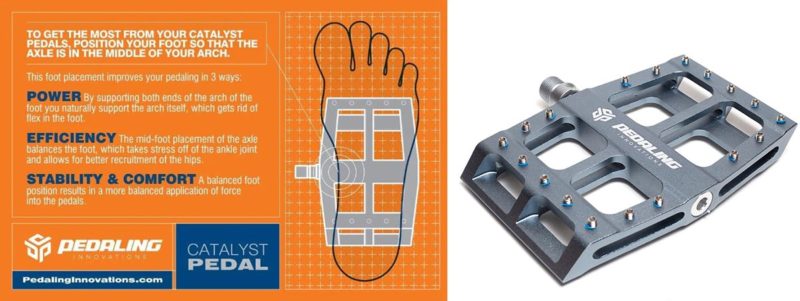
The Catalyst pedals’ five inch long platform is optimized for mid-foot placement, such that the axle sits underneath the middle of your foot’s arch. Pedaling Innovations say that this allows the pedal to support both ends of the arch, balancing the foot providing stability and comfort.
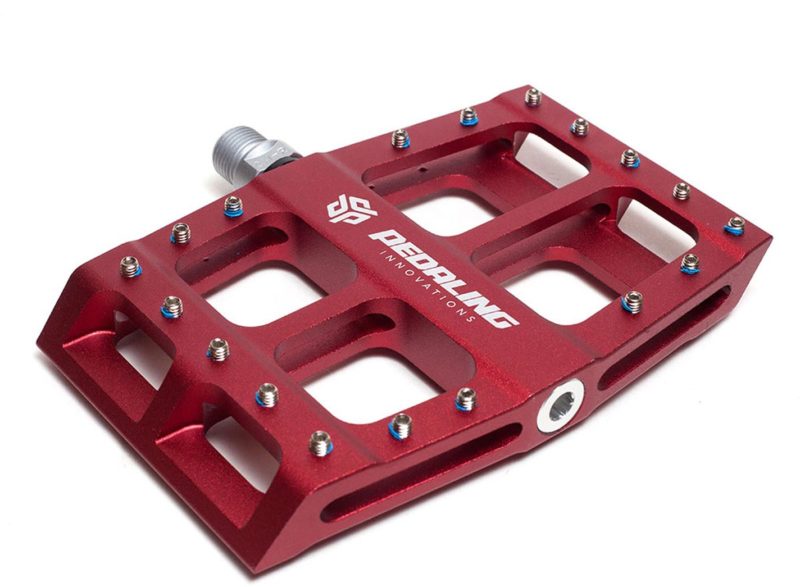
The original Catalyst One houses 18 pedal pins on each side, almost twice as many as you’ll see on most flat pedals for mountain biking. The platform itself is made from extruded and machined 6061 aluminium. The pedals have a 16mm profile and weigh a claimed 505g per pair. Internally, you’ll find a CrMo heat treated spindle and sealed cartridge bearings with DU bushings.
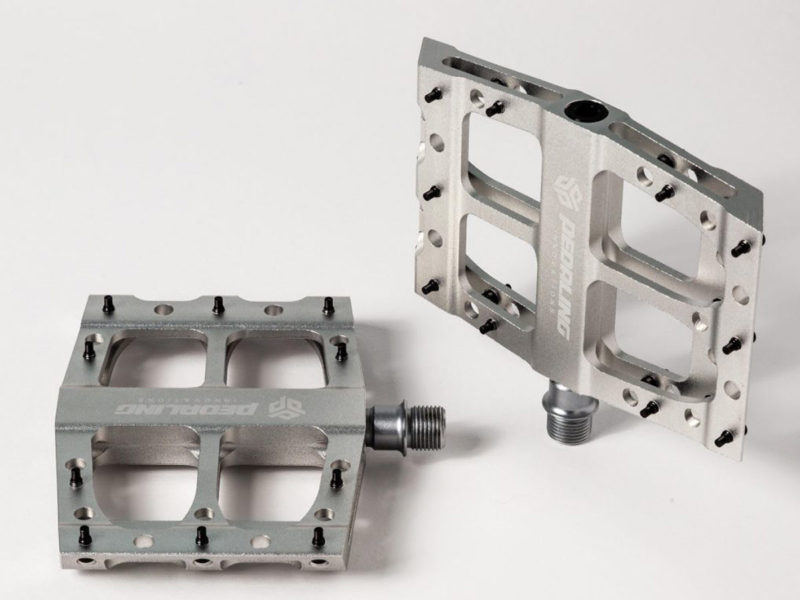
The more expensive Catalyst EVO is home to just 10 pins, but these are rear entry pins with a two-stepped design. The platform has the same 16mm profile and 95mm width of the Catalyst One, but is even longer at 5.6″ (143mm). Internally, the pedals are made up of a Cr-Mo spindle, and dual-sealed bearings with IGUS bushings.
The Catalyst One will set you back $129 with free shipping, while the Catalyst EVO costs a little more at $149. Pedaling Innovations offer a rebuild kit for the Catalyst One and Catalyst EVO pedals for $10, and a replacement axles for $10. Pedaling Innovations offer a Titanium axle upgrade for the Catalyst EVO at $99.
Pembree R1V Flat Pedals
Next are up are the new Pembree R1V flat pedals. Phil Law, founder of Pembree, says that while the R1V flats were initially targeted at e-mountain biking, they are also well suited to free ride and enduro applications. The Pembree R1V pedals weigh a claimed 624g per pair, and are priced at £199 ($260.79).
-

The Pembree RIV Flat Pedal for MTB has the following platform dimensions: 100mm x 110mm x 20mm
A 2014 T6 Aluminium pedal body sits on a 17-4 PH steel spindle. The inner bearings are sealed SKF needle bearings while the outer bearings are sealed SKF ball bearings.
The 20mm thick pedal is home to 10 adjustable-length pins per side. Six of these sit on “traction rails” – separate plates of 6082 T6 Aluminium that bridge the gap between the left and right hand sides of the pedal body. The other four pins thread into the main body.
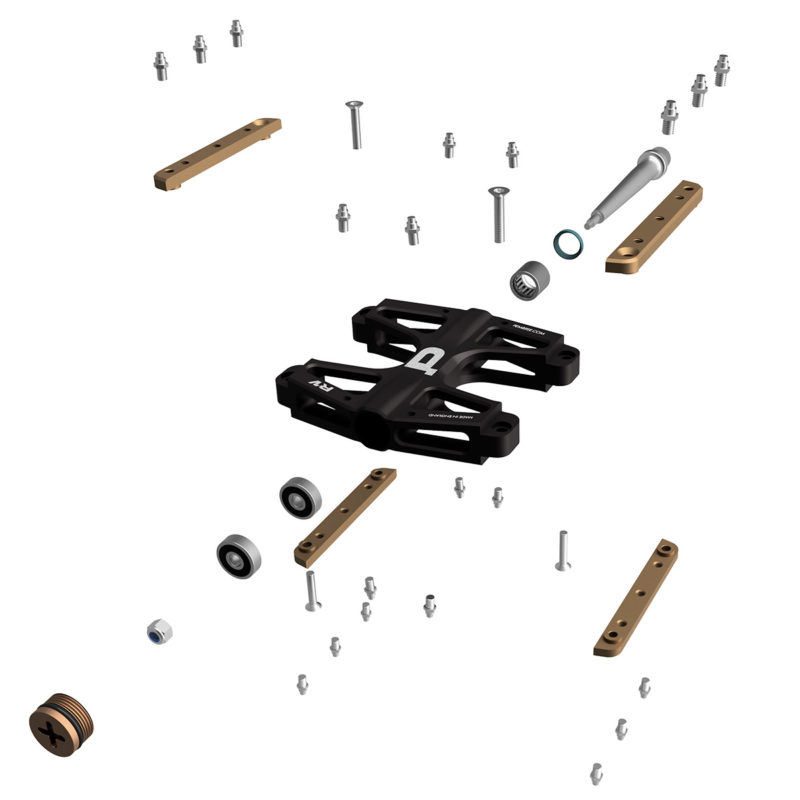
Pembree’s R1V pedal is made at a solar and wind energy powered factory in Sussex, England. This is something Pembree take a lot of pride in, claiming the R1V represents the benchmark in sustainably produced quality MTB parts.
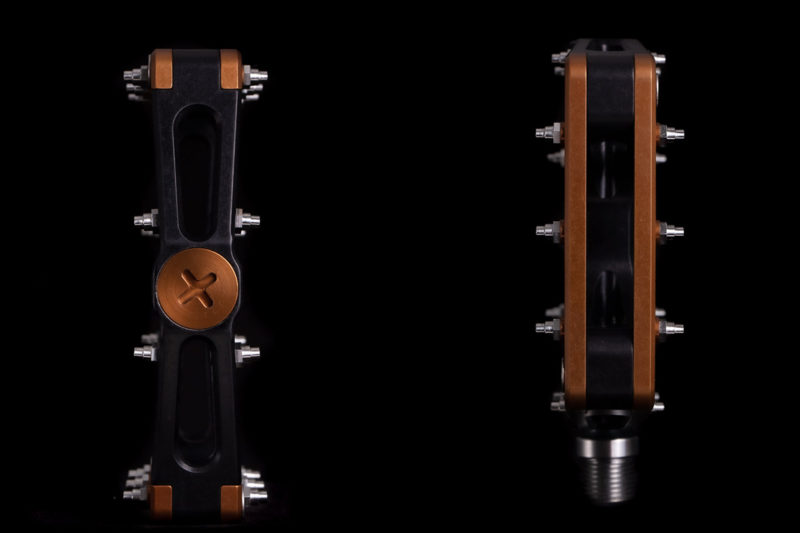
Pembree offer a “Pedals4Pedals” deal whereby they will ethically recycle broken pedals from any manufacturer, offering customers a 10% discount off their R1V pedal purchase. Customers can apply for this discount prior to their purchase, and the old pedals can be returned after receipt of the new R1Vs.
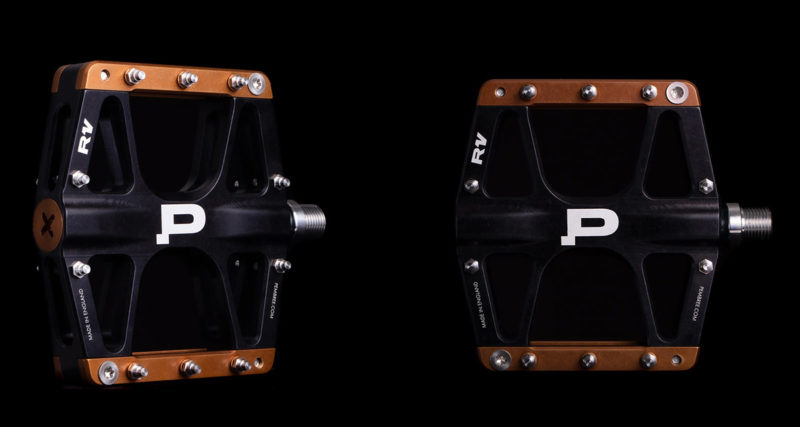
Pembree are now working on a more lightweight pedal aimed specifically at the enduro and slope-style markets.
Nukeproof Sam Hill Signature V2 Flat Pedals
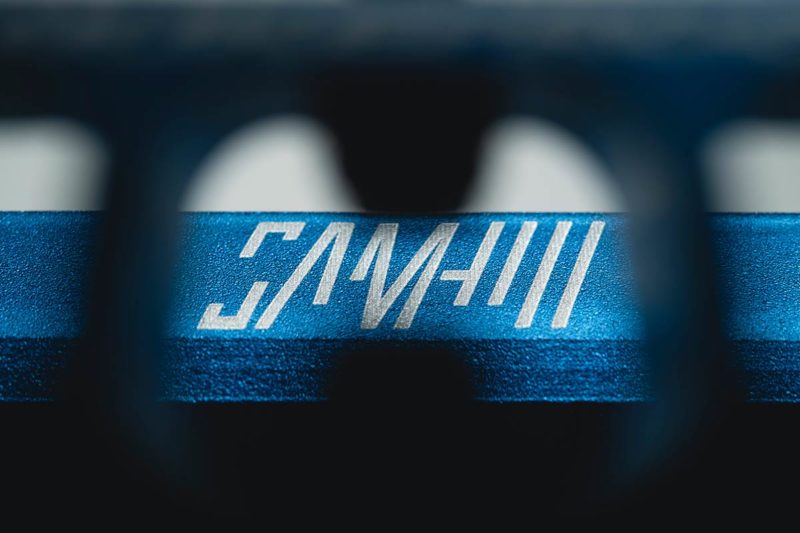
Finally, we get to the lightest pedals of the round up; Sam Hill’s Signature V2 Enduro Pedal. We got to see these at Mountain Bike Connection Winter earlier this year, where Nukeproof’s Rob Sherratt explained the reasoning behind the V2.
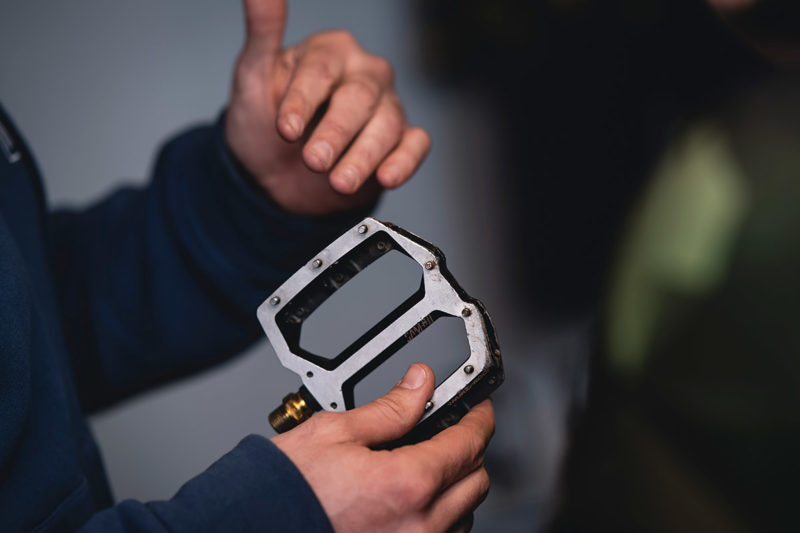
Though the original Nukeproof Horizon pedals sent Sam Hill to two consecutive EWS Overall Title wins, he felt it could be improved. Throughout the 2018 season, Sam felt as though the pedal could be slimmed down a little to provide more clearance from rock strikes.
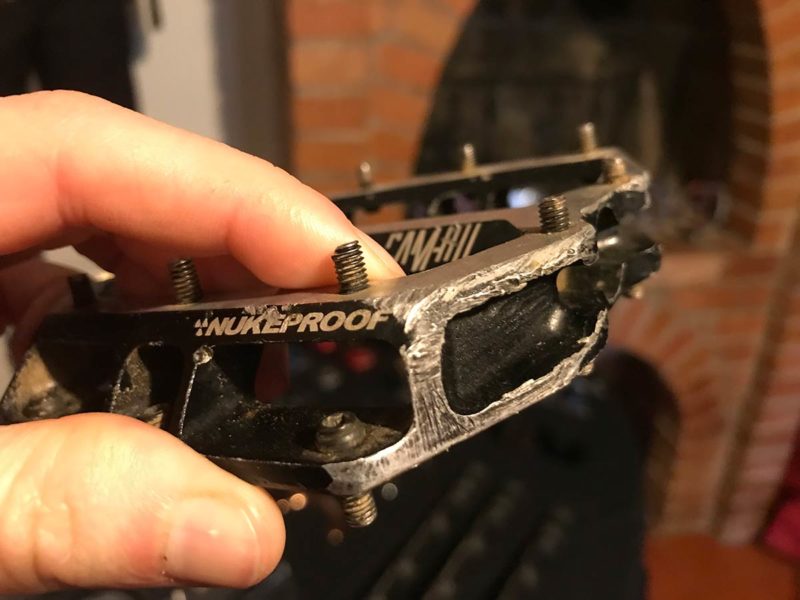
In fact, he asked his mechanic Jacy Shumilak to file the edges for him, and this is the pedal he raced on through the latter half of the 2018 season.

Naturally, Nukeproof wanted to update the Horizon pedal to capture the platform shape favored by Sam. He raced a prototype of the new Signature pedal in 2019, where he secured his 3rd consecutive EWS Title win.
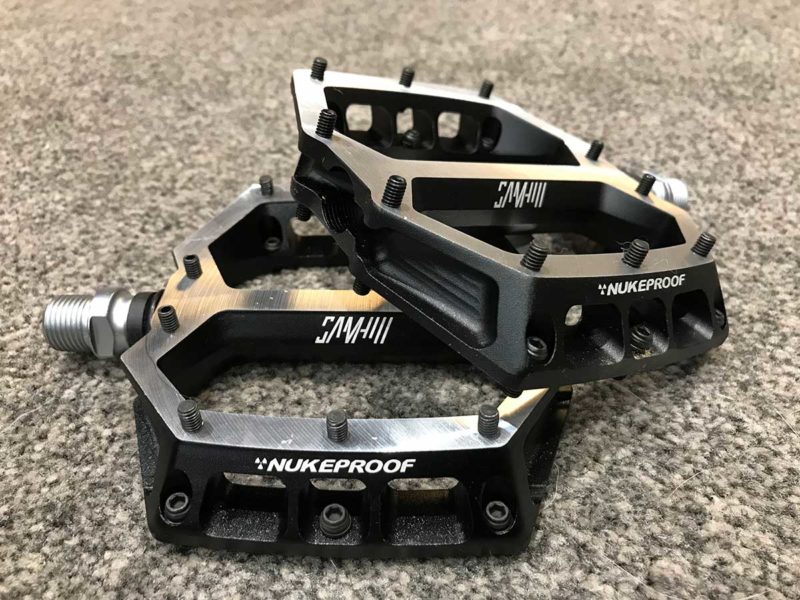
It retains the same pedal feel, strength and crucially pin placement of the original, but with vastly improved pedal strike clearance. The new design also sheds 23g off the original, now weighing a claimed 407g per pair.
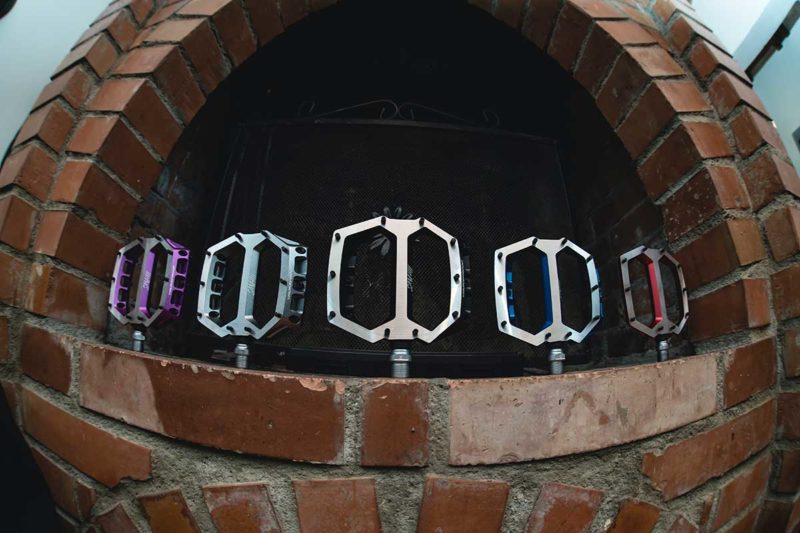
The Nukeproof Sam Hill Enduro Pedal V2 is available now at £85, or with a Ti axle for £165.
Eclat Centric BMX Pedals
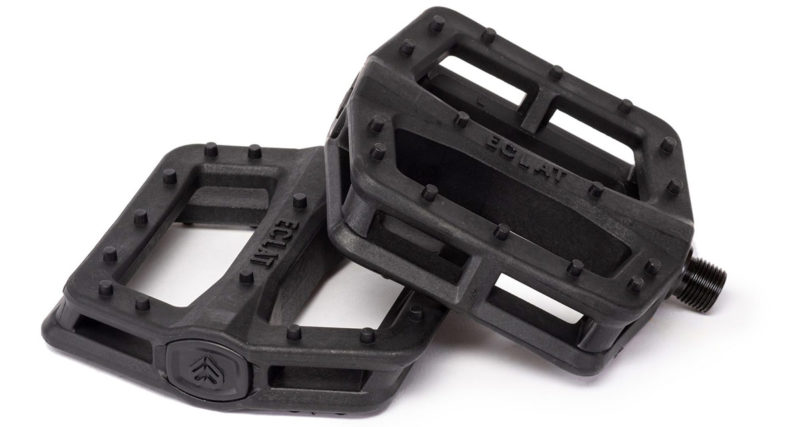
Last but not least is the most affordable pedal of this round up; the Eclat Centric BMX pedal. The Centric is an $18 injection molded, fiberglass-reinforced nylon BMX platform. Eclat’s PRO team riders such as Bruno Hoffman and Felix Prangenberg are now jibbing about on these flats – they say these are Eclat’s best feeling pedal to date.
Removing the 15mm wrench flat, Eclat were able to increase the overall size of the platform area, bringing it closer to the crank arm. Eclat reckon this has allowed them to create a stronger pedal spindle, but also allow riders a wider choice of foot positioning over a regular pedal.
The Centric pedal offers big molded reinforced pins for grip, and has a low profile design with thicker ribs for added support.
